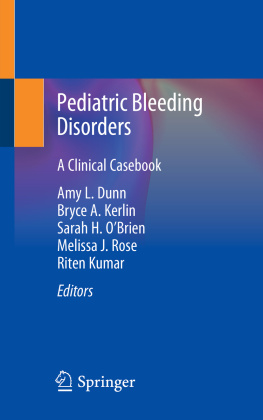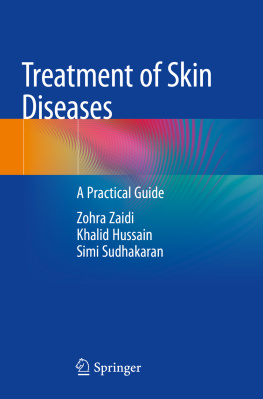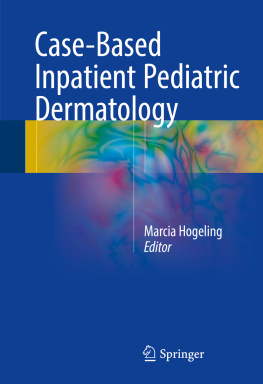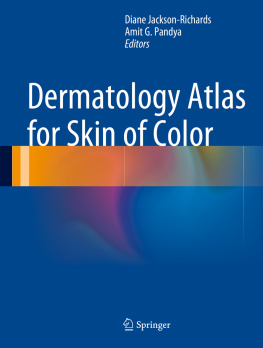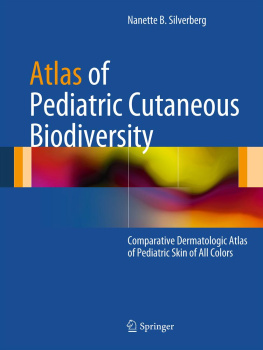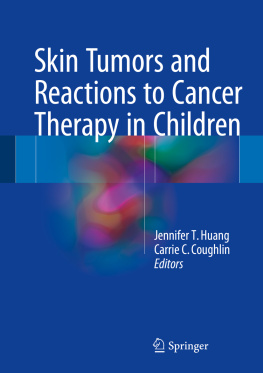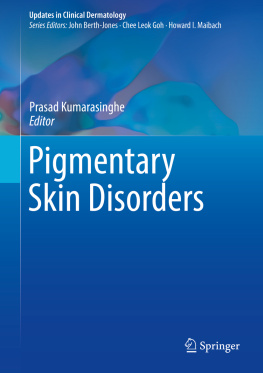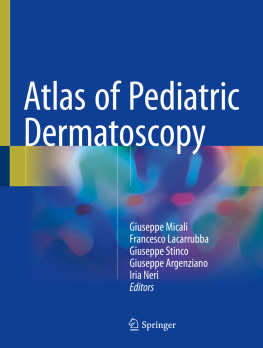Springer International Publishing Switzerland 2017
Joyce M.C. Teng , Ann L. Marqueling and Latanya T. Benjamin (eds.) Therapy in Pediatric Dermatology 10.1007/978-3-319-43630-2_1
1. Overview of Dermatologic Care in Children
Leslie Potter Lawley 1
(1)
Departments of Dermatology and Pediatrics, Emory University, 1525 Clifton Road NE, Altanta, GA, USA
Leslie Potter Lawley
Email:
Skin Care of Normal Newborn Skin
Clinical Features
Full-term infants are born with skin at near normal pH and a natural barrier in the form of the vernix caseosa. A combination of shed epithelial cells, sebum, and lanugo hairs, the vernix caseosa appears as a chalky-white cheesy film on the skin surface of full-term infants. It is not present in post-term neonates, whose skin is drier, and may not have fully formed in a pre-term infant, depending on the age of gestation. The formation of the vernix starts around week 28 and peaks at 3337 weeks gestation. The vernix caseosa should not be removed, but allowed to naturally resolve, as it aids in temperature regulation, skin hydration, protection from bacteria, and wound healing. Fine desquamation of the skin develops around 2 days of life for term infants. In preterm infants, desquamation may not be apparent until 23 weeks of life, while post-term infants may be born with dry, peeling skin [].
Over a period of weeks to months the acid level of stratum corneum increases to transform into the acid mantle. The acidic pH of the acid mantle provides a normal permeability barrier, enhancing cohesion and integrity of the stratum corneum. When cleansing newborns there is balance of removing bacteria, saliva, urine, feces, secretions, and soil while not over-drying the skin or harming the barrier created by the stratum corneum. As the infant ages and the acid mantle develops, skin care should not alter that natural barrier [].
Considerations for timing of the first bath for the newborn include stability of the neonates vital signs. Bathing can lead to hypothermia, increased oxygen demands, and respiratory distress if performed too soon [].
At birth, the umbilical cord is clamped, leaving a stump of umbilical tissue. Over a period of weeks (up to 8) it naturally undergoes necrosis and detaches from the body. Typically the process takes an average of 2 weeks. As the umbilical cord stump undergoes this process, the infant is at risk of local secondary infections. Keeping the umbilical stump dry helps reduce this risk.
Investigations Recommended []
Evaluation |
Prior to first bath after birth, measure temperature, oxygen status, respiratory rate and heart rate and ensure these signs are stable for 24 h |
Therapies []
Bathe neonates every 23 days |
Do not scrub to remove the vernix caseosa, but allow it to resolve naturally |
Sponge bath until the umbilical cord naturally falls off |
Immersion bathing is less harmful to temperature stability in newborns |
Utilize baby washes with neutral pH, free of fragrance and dyes |
In situations of home birth where hygiene sterile practices may be suboptimal, a one-time cleansing with chlorhexidine wipes as soon after birth as possible may reduce the mortality rate in low birth-weight babies (no significant change in mortality for normal weight neonates) |
Apply petrolatum-based emollients (fragrance-free, preservative-free, dye-free) every 612 h as needed for dryness of the skin |
Remove emollient from container with a clean tongue blade or other tool to prevent contaminating the moisturizer with bacteria |
Therapies: Daily Umbilical Cord Care []
Cleanse area with chlorhexidine. Then remove any excess soap to minimize local necrosis and absorption |
Consider the powder form of chlorhexidine which allow for more drying |
Avoid isopropyl alcohol or hexachlorophene |
Fold diaper away from stump to keep dry |
Principles of Pediatric Skin Care
Clinical Features
When considering cleansing skin, there are no significant differences between infant and adult skin. Infants produce skin surface lipids similar to adults, with a varied ratio of sebum to keratinocyte lipids compared to adults. During childhood these lipids are decreased. Starting in pre-adolescence, increases in circulating hormones (adrenal androgens followed by gonadal androgens) stimulate production of sebum. In many adolescents the increased sebum leads to more oily complexion and hair, contributing to acne and seborrhea [].
Most studies on tolerance of skin care products have been in children with certain disease states such as atopic dermatitis. We lack evidence as to how often to bathe children with a normal skin barrier, what cleansers to use, how often to shampoo hair, and how often to use emollients. At this point we can only extrapolate information from studies on infants and children with skin barrier defects and atopic dermatitis to determine skin care for those children with normal skin. It must be considered that children with skin barrier defects have drier, more sensitive skin. Most soaps are made of animal or vegetable fats to remove dirt and oils and are alkaline in nature. Because the skin surface is acidic (acid mantle), synthetic detergents have been developed to protect the pH of the skin. The use of these neutral and even acidic pH cleansers are likely more important for children with skin barrier defects. Most normal children can tolerate the soap and shampoo their parents prefer to use [].
Sun protection throughout childhood and adolescence is important. Studies indicate that at least 2550 % of lifetime sun exposure occurs before age 18 years. In the first 2 years of life melanin production is limited, and skin may be more susceptible to UV damage. After 2 years, the skin of a child is similar to an adults skin, however, the dermal papillae may be closer to the skin surface, leading to increased UV exposure to the basal layer. As children enter pre-adolescent ages they often become more independent in their skin care, so education of proper sun protection at that time is paramount to preventing damage from UV that can lead to skin cancers later in life [].
To date there is not evidence that any of the sun filters used in sunscreen harm children, however, controversy exists over the safety of organic protectors such as oxybenzone (benzophenone-3). Studies have shown absorption of oxybenzone with excretion in the urine, however, no known adverse effects have been seen. Allergic contact dermatitis can develop to organic blockers, leading to advice to avoid them, especially in children with skin barrier defects. Risk is minimized by using inorganic sunscreens (zinc oxide and titanium dioxide), where even the micronized nanoparticle forms do not absorb systemically through the skin, and no cytotoxic or genotoxic effects have been found. The combination of N,N-dimethyl-meta-toluamide (DEET) insect repellent and sunscreen leads to increased absorption of the DEET. For this reason, the combination sunscreen-insect repellent products should be avoided, as well as concomitant application of both products. In addition, sunscreen needs to be applied more frequently than insect repellent [].



